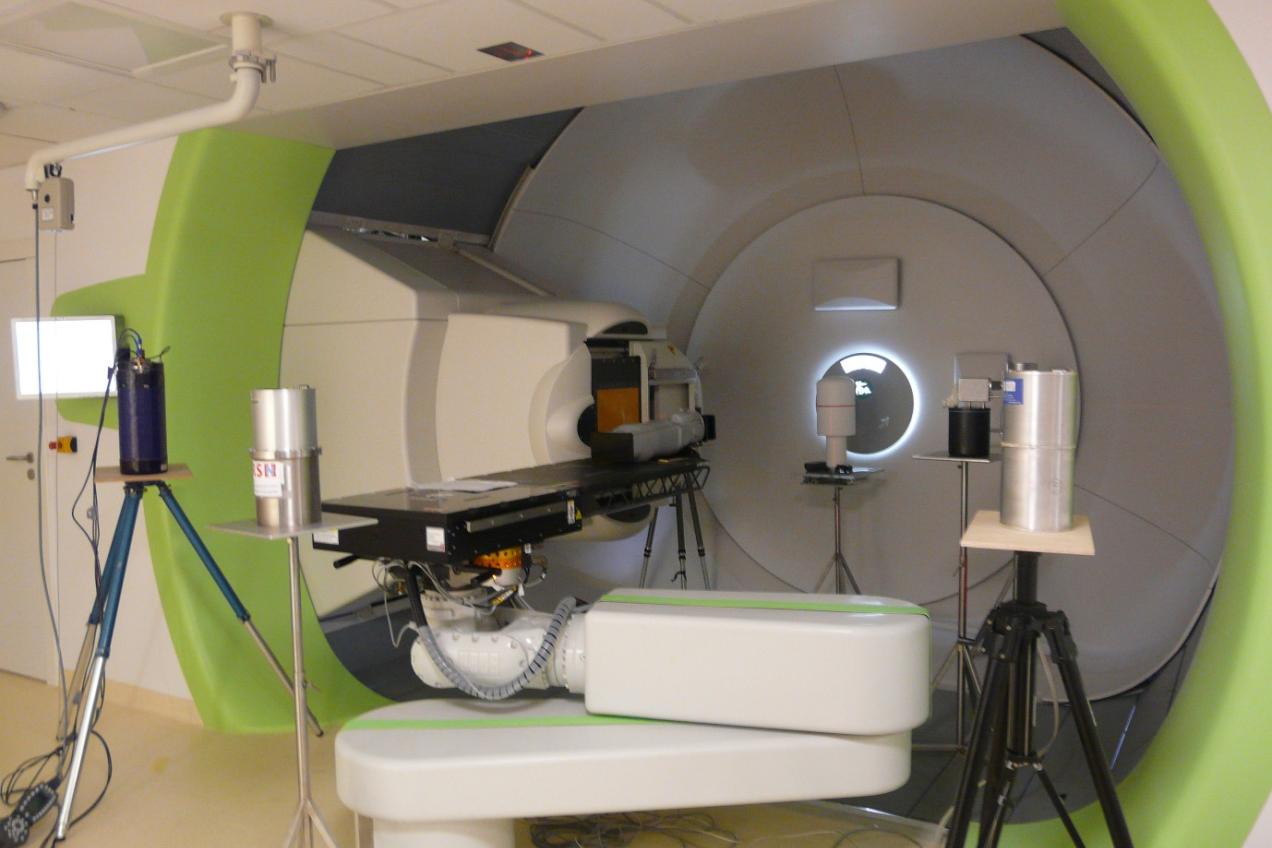20th EURADOS Webinar: Out-of-field doses for paediatric and pregnant patients in radiotherapy
All information
Online event
Starting time: 14:00 CEST
Overview
Even though many studies on non-target doses are available in the literature, the estimation of out-of-field doses for an individual patient remains a challenge. Since 2010 EURADOS Working Group 9 (Radiation Dosimetry in Radiotherapy) has been working to improve out-of-field dosimetry for photon and particle therapy, especially in the case of pediatric patients. Firstly, WG9 performed a detailed characterization of the out-of-field doses, associated with photon and proton radiotherapy in a simplistic set-up of a water phantom with both measurements and MC simulation. Our investigations clearly showed the complexity associated with the secondary radiation field produced in radiotherapy and allowed us to improve dosimetric methods used for out-of-field dose measurements. The next step included measurement campaigns organized by WG9 to study secondary radiation for different photon radiotherapy techniques. Those experiments were followed by a measurement campaigns dedicated to proton radiotherapy with pencil beam scanning technique (PBS). In both photon and proton therapy, out-of-field organ doses were measured inside 5- and 10-year-old anthropomorphic phantoms for the same target size and location. Our studies were performed for a realistic clinical treatment of a pediatric brain lesion, to give a fair comparison between different treatment methods. Recently, we have focused our work on the estimation of doses received by the fetus during the mother's radiotherapy. Approximately 1 in 1000 pregnancies is complicated by cancer and today around 70% of patients are being treated during their pregnancy. However, radiotherapy is only administered in 3% of these patients mostly due to the lack of accurate dose data as well as reliable information on the risk of fetal damage and the debate of what is considered acceptable. Significant technological advances in radiotherapy open up new opportunities for the treatment of cancer during pregnancy and create the need for a better understanding of out-of-field doses in radiotherapy.
Programme
- 1. Liliana Stolarczyk: Introduction to the workshop
- 2. Marija Majer: Dosimetry for secondary radiation in radiotherapy
- 3. Željka Knežević: Out-of-field doses during pediatric radiotherapy
- 4. Marijke De Saint-Hubert: Radiotherapy during pregnancy
Organisation
This webinar is organised by EURADOS WG9 "Radiation dosimetry in radiotherapy"
Registration info
Register here!
Speakers
Liliana Stolarczyk
Medical Physicists, PhD - Danish Centre for Particle Therapy AUH, Aarhus, Denmark
Liliana Stolarczyk is a medical physicist with more than 10 years of experience in proton radiotherapy interested in the clinical implementation of new technologies as well as clinical dosimetry, quality control, and secondary and scattered radiation in radiotherapy. She was involved in building the first Polish proton radiotherapy centre Cyclotron Centre Bronowice IFJ PAN in Krakow. Currently, she is working at the Danish Centre for Particle Therapy in Aarhus. Since 2019 she has been a Chairperson of EURADOS Working Group 9 ‘Radiation dosimetry in radiotherapy’.
Marija Majer
Senior research associate - Ruđer Bošković Institute, Zagreb, Croatia
Marija Majer received her PhD in nuclear physic from the University of Zagreb in 2008. Since 2011, her research interest has been in radiation dosimetry with a focus on the characterization and application of radiophotoluminescent and thermoluminescent dosimetry in medical applications and environmental dosimetry. She is/was a member of research teams in many national and international projects. Since 2012, she is actively involved in the work of EURADOS Working Group 9 “Radiation dosimetry in radiotherapy” and Working Group 12 “Dosimetry in medical imaging”. As a lecturer, she is involved in the graduate and doctoral programmes in physics at the Faculty of Science, University of Zagreb.
Željka Knežević
Head of Radiation Chemistry and Dosimetry Laboratory, senior research associate - Ruđer Bošković Institute, Zagreb, Croatia
Željka Knežević obtained her PhD in the field of thermoluminescent dosimetry. Currently, she is working as a senior research associate in the field of radiation dosimetry with the focus on patient dosimetry during medical imaging and radiotherapy. She is/was a member of the research team in several national and European-funded projects in the field of medical dosimetry, radiation protection and environmental radiation monitoring. Since, July 2013 she is a chairperson of EURADOS WG12 „Dosimetry in medical imaging“ and also a member of WG9 “Radiation dosimetry in radiotherapy” and WG3 Environmental dosimetry.
Marijke de Saint-Hubert
Researcher in the Unit Research in Dosimetric Applications - Belgian Nuclear Research Centre, Mol, Belgium
Marijke De Saint-Hubert is responsible for dosimetry applications in the medical field with a particular focus on out-of-field organ doses during radiotherapy as assessed using anthropomorphic phantoms and various dosimetry systems such as thermoluminescent detectors (TLD), optically stimulated luminescence (OSL), radiophotoluminescence (RPL), bubble detectors, Mini-pix as well as neutron monitors (WENDI, TEPC, Berthold). She is a full member of the EURADOS, Working Group 9 “Radiation dosimetry in radiotherapy”, actively involved in tasks related to radiotherapy during pregnancy and intercomparison of Monte Carlo codes. Marijke De Saint-Hubert is a task leader within a recent European project (HARMONIC - 2019), where she is responsible for the measurements of out-of-field doses within pediatric phantoms for validation of dose reconstruction algorithms used within a cohort of 1800 patients.
